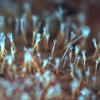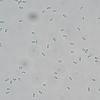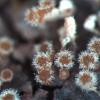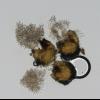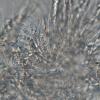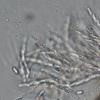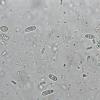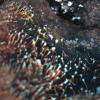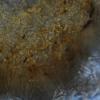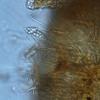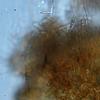
15-11-2025 23:22
Mario FilippaHello,this is what I think to be Hymenoscyphus mac

14-11-2025 16:26
 Marian Jagers
Marian Jagers
Hello everyone, On dead wood of Cytisus scoparius

15-11-2025 20:25
 Riet van Oosten
Riet van Oosten
Hello, Found by Laurens van der Linde, Nov. 2025

14-11-2025 18:31
 Lothar Krieglsteiner
Lothar Krieglsteiner
Hello,can somebody provide me with a file of:Rothe

12-11-2025 09:25
 Viktorie Halasu
Viktorie Halasu
Hello, I need help with a pale terrestric Pseudom

11-11-2025 20:16
Bohan JiaHi, lastly I have found these tiny yellow decayin

09-11-2025 13:20
Hello.A tiny ascomycete, appearing as erupting gra
Nectria?
Guy Buddy,
19-09-2019 22:08
I was referring to: "Three Species of Hypomyces Growing on Basidiomata of Stereaceae", by Kadri Põldmaa, Mycologia Vol. 95, No. 5 (Sep. - Oct., 2003), pp. 921-933. But ascospores do not have warts. After reading this I am leaning back to Nectriaceae.
There are some other options such as Sphaerostilbella, but I am not familiar with any of these. Do you think the synnemata and the perithecia are related, and that this a species of Nectria?
Thanks,
Devin
Josep Torres,
20-09-2019 07:53
Re : Nectria?
Hola Guy, sobre Stereum y con estas esporas solo se me ocurre la Nectriopsis oropensoides, aunque no lo tengo del todo claro.
Saludos cordiales
Saludos cordiales
Guy Buddy,
20-09-2019 17:52
Re : Nectria?
Hi Josep,
Nectriopsis is possible, but macroscopically it does look a bit different. I think the perithecia are covered in some kind of hyphomycete ( or the real anamorph), without a subiculum that I see from photos of Nectriopsis. I will look into it though, thanks for the suggestion.
Nectriopsis is possible, but macroscopically it does look a bit different. I think the perithecia are covered in some kind of hyphomycete ( or the real anamorph), without a subiculum that I see from photos of Nectriopsis. I will look into it though, thanks for the suggestion.
Guy Buddy,
26-09-2019 18:15
Re : Nectria?
For the moment, I believe the synnemata are Gliocladium, described as a anamorph of Sphaerostilbella. I am refering to "Genera in Bionectriaceae, Hypocreaceae, and Nectriaceae (Hypocreales) proposed for acceptance or rejection". IMA Fungus. 2013 Jul; 4(1): 41–51, which declares Gliocladium as the anamorph for Sphaerostilbella.
Looking at some pictures from:
"Sphaerostilbella broomeana-group (Hypocreales, Ascomycota)", Kadri Põldmaa, Gerald Bills, David P. Lewis, Heidi Tamm. February 2019, Volume 18, Issue 1–2, pp 77–89. It looks like the anamorph is covering the perithecia.
If the anamorph is covering the perithecium, how is the Gliocladium synnemata related? Does anyone know?
Thanks,
Devin
Looking at some pictures from:
"Sphaerostilbella broomeana-group (Hypocreales, Ascomycota)", Kadri Põldmaa, Gerald Bills, David P. Lewis, Heidi Tamm. February 2019, Volume 18, Issue 1–2, pp 77–89. It looks like the anamorph is covering the perithecia.
If the anamorph is covering the perithecium, how is the Gliocladium synnemata related? Does anyone know?
Thanks,
Devin
